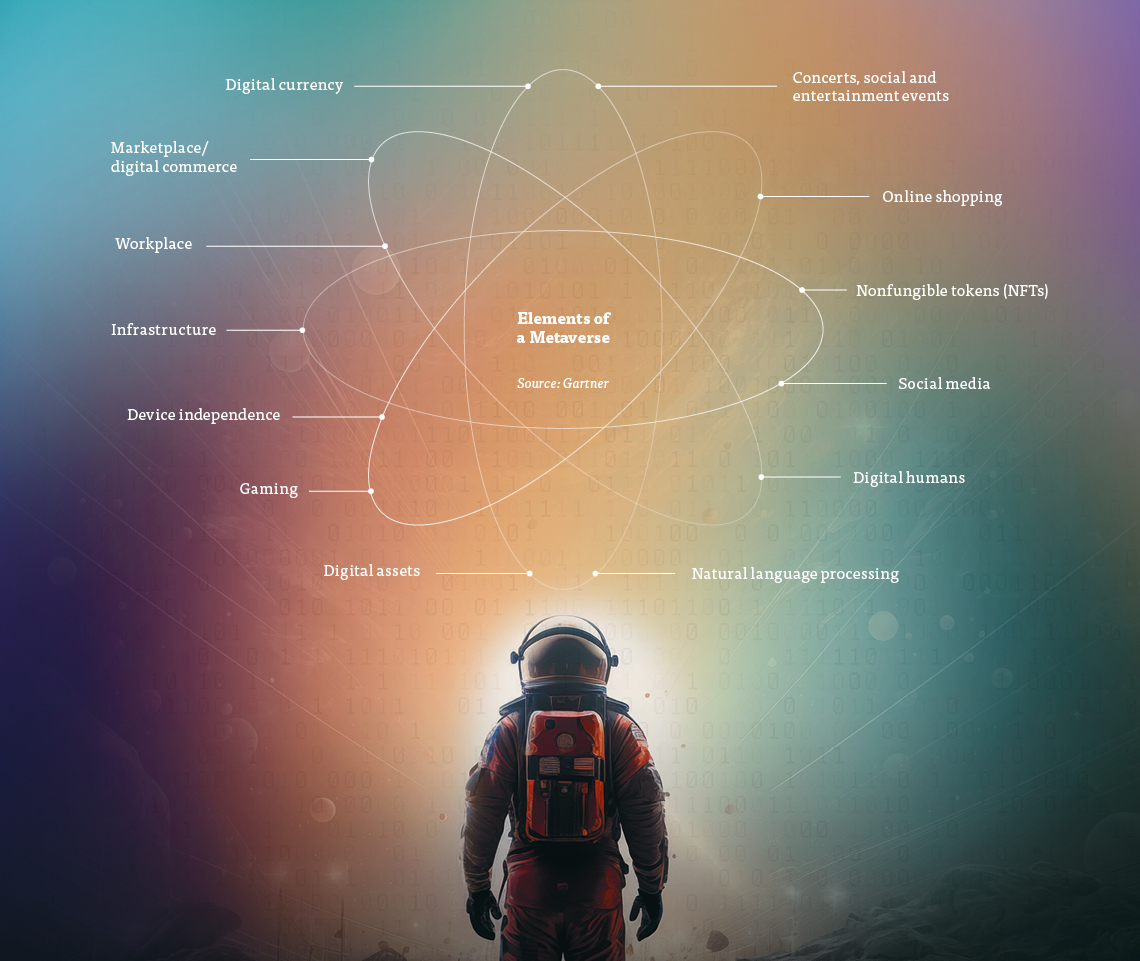Rarely has a term such as the Metaverse garnered such rapid and widespread media attention. Fundamentally, it’s about the experience of a virtual world that individuals can shape according to their own ideas. Pioneering Human Machine Interfaces will be a core technology in this endeavour.
It’s posited to be nothing less than the future of the Internet – the Metaverse. At its heart, it’s about a new, complex virtual world where one lives as a digital twin or avatar and may, in the future, also work and carry out daily activities. There are numerous connections with the real world: for example, virtual goods can be purchased with real money within the Metaverse. Behind avatars are real people, and behind virtual machines are real industrial complexes in the sense of a digital twin. “The Metaverse is one of the most thrilling visions of our time,” says Dr Bernhard Rohleder, CEO of the German industry association Bitkom.
The Metaverse is built upon technologies that are already well-established, such as augmented and virtual reality, blockchain, or artificial intelligence. The representation of virtual three-dimensional spaces, objects or individuals and the ability to interact with them are increasingly being employed not only in entertainment, marketing and eCommerce but also being tested and applied in industry, education and services. What has long been familiar to computer gamers is now being discovered as potential across various industries.

Realistic interaction
A core element of the Metaverse is the potential for realistic interaction in real time between different users or between users and machines. The immense advancements in hardware – both at the infrastructure level and in Human Machine Interfaces – have been prerequisites for the growing acceptance of this new virtual world. The major software companies are now entering the market with their hardware solutions: Meta purchased the VR headset developer Oculus in 2014 and now sells its own headsets under the name Quest 2. Apple has filed several patents over the last decade and aims to bring its VR headset to market in early 2024. Current systems also use controllers that enable targeted “touches” with virtual objects through finger, hand and arm movements. On the infrastructure side, faster fibre optic networks and the introduction of 5G are reducing the effects of latency times and increasing available bandwidth.
Collaboration in virtual space
Today, “serious” applications in industrial environments are possible. For example, Igus, a manufacturer of energy chains and plastic glide and linear bearings, has created its own virtual world where users from around the world can interact and collaborate on projects without the need for physical presence. Automation solutions can be planned, controlled and tested in virtual space using extended reality technologies like virtual reality and augmented reality. “In the future, we will see how collaborative work between humans in the Metaverse and, for instance, the control of robots from virtual worlds will change the way we work together,” says Marco Thull, Senior Marketing Activist at Igus.
Feeling the virtual world
In the future, the virtual world may even become literally “tangible.” Jürgen Steimle, a computer science professor at Saarland University, aims to achieve this through ultra-thin electronic films that can be applied to the body like transfer tattoos. Most applications of augmented reality have one thing in common: they only or primarily address the sense of sight. “The sense of touch is usually left out, although it’s a crucial factor in how we perceive our world,” explains Jürgen Steimle, who leads the research group on Human-Computer Interaction at Saarland University.
Steimle’s team has developed an ultra-thin, only 35 micrometres thick electronic film in the project “Tacttoo”, which can be applied to the skin and stimulate the sense of touch solely through electrical stimuli, without any moving parts. Because the film is so thin, objects can still be perceived and felt as before. Not only can haptic experiences for purely digital objects be created – as already possible with other solutions – but real objects can also be extended with other sensory impressions. For example, the technology could be used in product design: with the help of augmented reality and a physical prototype, the haptics of different materials could be tried out.
Standards for an open Metaverse
For the Metaverse to find broad application, a range of technologies for collaborative spatial data processing must be integrated, from interactive 3D graphics to physical simulations to the online economy. The Metaverse’s potential will only be unlocked if it is built on a foundation of open standards. To this end, the Metaverse Standards Forum was established in 2023, a non-profit consortium that doesn’t want to develop its own standards but brings together various Metaverse stakeholders to create consensus on interoperability requirements. “Interoperability is the key to the metaverse scaling to its full potential beyond siloed games, experiences and worlds, and the unprecedented level of participation in the Forum demonstrates strong industry interest in the broad cooperation necessary to bring that vision to life,” says Neil Trevett, president of the Khronos Group and initial president of the Metaverse Standards Forum.

